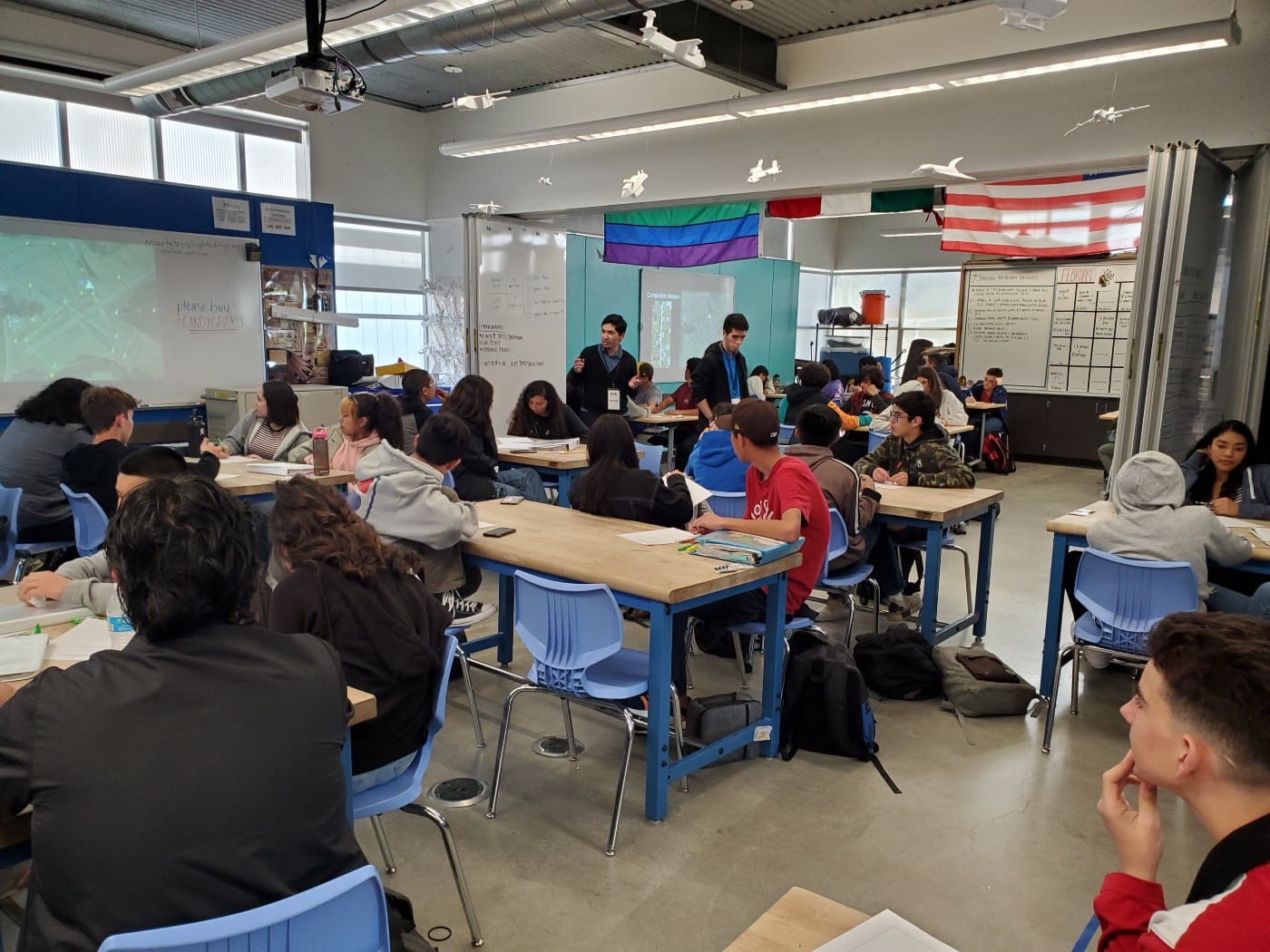On February 7th, airframe lead, Andrew Fletcher, and embedded lead, José Orozco, visited High Tech High Chula Vista to give a short presentation to Marcus Artates’ 9th grade physics class about Triton UAS and our three subteams. Triton UAS has previously worked with Marcus Artates and HTHCV when Andrew and our other airframe lead, Jessica Chan, served as panelists at the Presentations of Learning, with their experiences published in our other blog post. The students in Marcus’ class have been working on several different projects with one of the projects being an aerospace project similar to what Triton UAS works on. With this visit, we hoped to give the students a more detailed explanation about our student organization and answer any questions they had for us.
Our leads were asked many questions, such as why they joined Triton UAS. Andrew shared that his decision to join was made at the UCSD engineering organization recruiting event, Engineers on the Green. Andrew was interested in Triton UAS’ project and has stayed with us ever since. José joined because of his interest in electronics and circuits. Through Triton UAS, he has been able to apply his interests to hands-on projects in Triton UAS. Both Andrew and José have used Triton UAS as an experience to guide their career paths and apply knowledge learned during classes. They were also asked about what leads and other members do in our club. As an airframe lead, Andrew answered that he is responsible for building the airplane and having it ready for the SUAS competition. Additionally, airframe members are also responsible for the unmanned ground vehicle as part of the project. José is an embedded lead, whose responsibilities revolve around the electronics that are placed inside the plane. These types of tasks are helpful with gaining experience and developing skills that can be used after graduation. Our leads were also asked how many girls were part of our team. We have five girls on our team, including our airframe lead and project manager, Jessica Chan.

The students were also curious about some technical guidance, specifically cameras, that our leads could provide. The camera choice and application to an unmanned aerial vehicle is different depending on the purpose of the camera. For applications such as computer vision and taking images of the ground from over 100 ft, one will need a more expensive camera with good image resolution similar to our own DSLR camera.
We would like to thank Marcus Artates again for giving us this opportunity to present about Triton UAS and answer any questions about our organization and our project, and we hope to continue working with the students at High Tech High Chula Vista as they move forward with their own projects.